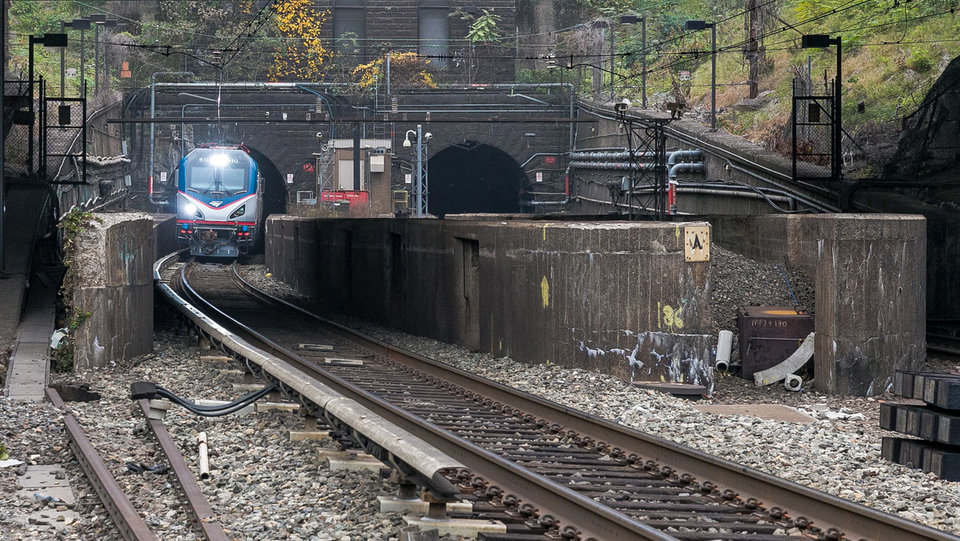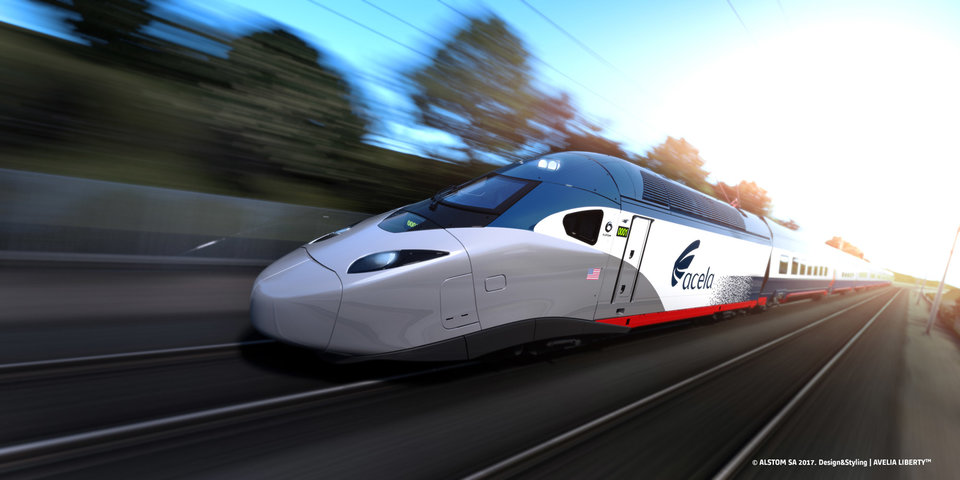Amtrak, to its credit, has been pouring all of its money back into the system
What has held Amtrak back?
In 2019, Amtrak served 12.5 million passengers across its three ‘spine’ services in the Northeastern corridor, compared to 4.5 million across its 15 long-distance services. This equated to $568m profit on its Northeast corridor lines, compared to $475m in losses on its long-distance lines.
Infrastructure access is also a big operating cost for Amtrak, with losses totalling $110m in 2019. Despite its services covering 21,400 miles of track, Amtrak only owns approximately 630 miles of it. Sharing these tracks with freight trains was the cause of more than half of the delays experienced on Amtrak’s long-distance lines in 2018, costing the company $42m in losses.
Then there’s the company’s “backlog of debt” totalling between $30bn and $40bn, resulting from investments in infrastructure. According to Amtrak, this debt makes it difficult for the company to achieve profitability.

Amtrak is currently involved in the planned renovation of New York’s Hudson Tunnels.
In 2019, the company spent $1.6bn in capital investments, of which $713m went on infrastructure. An additional $437m was spent on equipment and $143m on station upgrades.
With considerable investment still required, infrastructure needs will continue to hold the company back.
“Amtrak, to its credit, has been pouring all of its money back into the system,” says Jeans-Gail. “However, the capacity for investments in upgrades is much greater than what is currently taking place. What has held Amtrak back is the same thing that has held the rest of the US infrastructure back: the fact that we stopped investing in physical infrastructure in any meaningful way in the late 1980s.”
Proposed funding cuts
Amtrak was allocated $8.1bn in funding between 2016 and 2020 and part of the $305bn Fixing America’s Surface Transportation (FAST) Act, passed to provide long-term funding certainty for surface transportation without increasing costs to the public.
In 2020, Amtrak will receive close to $2bn in federal subsidies, including $1.3bn to support its unprofitable long-distance network, as well as $650m to support its Northeast Corridor services.
However, in February, for the third consecutive year, the Trump administration proposed slashing Amtrak’s funding. The proposal requested that Amtrak’s funds were cut by more than 50% from 2021, taking funding for its Northeast corridor from $700m to $325m, and long-distance funds from $1.3bn to $611m. It also proposed phasing out support for its long-distance trains.
“Amtrak’s long-distance trains do not serve a vital transportation purpose and are a vestige of when train service was the only viable transcontinental transportation option,” the budget proposal stated.
However, in 2014 the Massachusetts Institute of Technology’s International Center for Air Transportation found that the 2009 financial crisis and rising fuel prices hit small and medium-sized airports particularly hard with the frequency of flights having declined by 21.3%, compared to 8.8% at larger airports.
“With what’s happening with the airline industry currently, we can expect that to get worse,” Jeans-Gail states. “[The proposed cuts] would hurt tens of millions of people, in states all across the US.”
Amtrak’s Empire Builder line, for example, transported 433,000 passengers in 2019, many from rural communities that lack access to rail, bus or air alternatives.
[The proposed cuts] would hurt tens of millions of people, in states all across the US.
Amtrak is well into the procurement process for the new Northeast Corridor fleet (ACELA 2021)
More, not less, government funding required
Increased government funding has allowed Amtrak to continue modernising and expanding its infrastructure, routes and fleet.
“Amtrak is well into the procurement process for the new Northeast Corridor fleet (ACELA 2021); safer, more energy-efficient next-generation diesel locomotives to replace the ageing National Network locomotive fleet; and has issued a request for proposals for new single-level equipment to replace Amfleet I cars on the Northeast Corridor and neighbouring State-Supported services,” Jeans-Gail says.
“A majority of the additional frequencies have come from state partnerships with Amtrak. You can see exciting new models emerge in Washington State and Oregon, Virginia, California and Maine.”
Amtrak’s steady year-over-year increase in ridership is evidence that Amtrak has made positive improvements. Annual ridership has climbed from less than 21 million in 2000 to 32.5 million in 2019.

Amtrak’s state-of-the-art, high-speed Acela trainsets are set to enter service in 2021.
Increasing funding has helped to improve the quality of service provided, Jeans-Gail says, but this has been “uneven” across Amtrak’s network:
“You might see refurbished equipment or new equipment on one corridor and then—via a connection in Chicago—transfer to a train that hasn’t been materially updated since the 1990s.”
To meet public demand across its various services, Amtrak would require tens of billions more in federal and state subsidies, Jeans-Gail says.
“Predictable, dedicated, and sufficient funding will be necessary in the long-term for a healthy passenger rail system in the US. Rail Passengers is asking Congress to work with states and Amtrak to establish a stable funding mechanism to allow for critical investments in equipment that will meet public demand for reliable, energy-efficient equipment with modern amenities.”
Will Amtrak be derailed?
Trump’s proposals have twice been rejected by Congress, but will it be a case of third time lucky?
“No,” says Jeans-Gail. “Congress has rejected President Trump’s proposal in a bipartisan fashion.”
However, even with the support of Congress, Amtrak’s ambition to finally break even on its operating costs could still be delayed beyond 2020.
The world is holding its breath as the coronavirus pandemic sweeps across the world. With many major cities set to face months of quarantine, the transportation sector is already suffering, and will continue to suffer. Amtrak has already significantly cut its services in response to falling demand.
“Amtrak’s daily ridership is down more than 60% due to coronavirus, with future bookings down 80% year-over-year and cancellations up more than 400%,” Jeans-Gail says. “This is a new world.”
Amtrak’s daily ridership is down more than 60% due to coronavirus